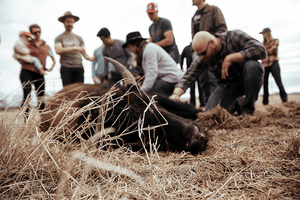This is an account from EPIC COO/CFO Robby Sansom. Learn more about Roam Ranch and its relationship to EPIC here.
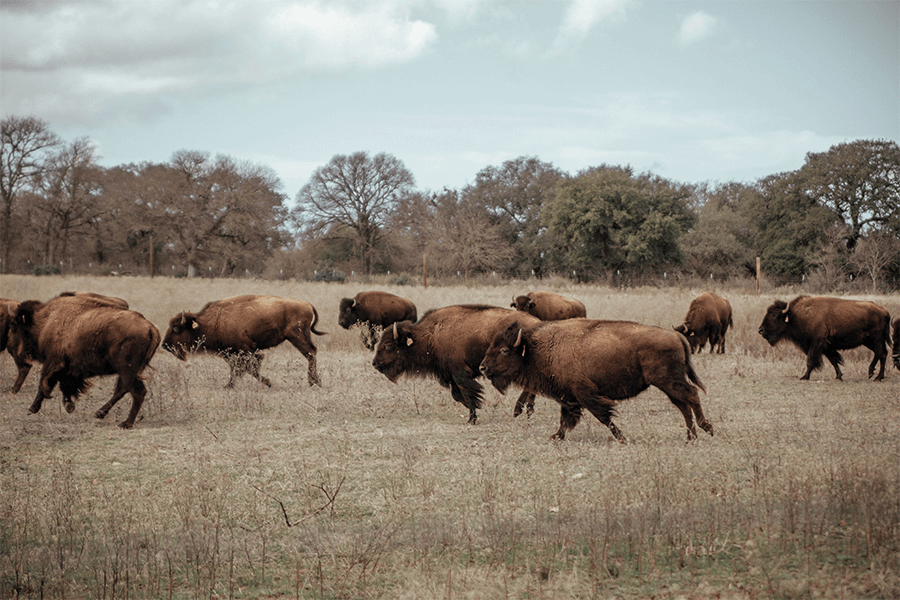
The Beginning: Bringing Bison to Roam Ranch
The distant setting sun painted the perfect backdrop for one of my most cherished memories. As the last strokes of amber graced the sky, Taylor, Katie, Kirk and I were tending to the final details in anticipation of the arrival of our bison at Roam Ranch. Over the last few months, we had meticulously prepared the animals for their journey as well as the pastures for their arrival—but we were still anxious.
This was the moment of truth. While we desperately wanted these majestic animals returned to the land where they had once flourished, we were now squarely focused on one thing: their wellbeing. There was a nervous energy in the air when they charged off the trailer. In a thunderous exit, they reassured us that they were just fine. As the four of us let out a collective sigh of relief, the animals had another surprise for us. They began a dynamic victory lap, greeting and circling their new surroundings with excitement. It was as if they knew that they were the first of their kind to return to this land in over 150 years. They’d never been here before, but they were finally home.
In the almost two years since then, we’ve never stopped worrying or laboring over their care. We’ve taken on this burden because—across a nation that is now chopped up and fenced in—well-managed agriculture is the only way that these animals (and the grasslands that depend on them) can thrive again. We’ve broken our backs laying lines and stretching fences so that we can ensure their access to water in a drought and to good nutrition despite degraded soils. We want to protect the health and safety of the bison within a compromised ecosystem and within a community where their presence, in a cruel twist of fate, is now seen as foreign and sadly even unnatural by some.
We’ve endured sleepless nights, countless dollars, and dangerous physical labor to begin the process of correcting these wrongs and to take care of these animals we love. This has been our focus: heal the land and protect these bison at all costs.
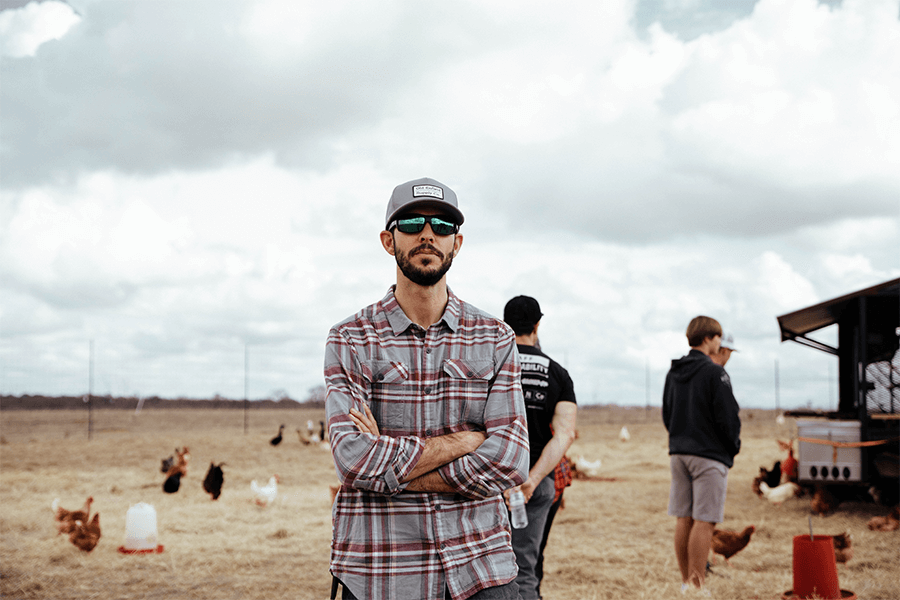
The Question that Starts it All
Nearly two years later, I’m unprepared and taken aback by the weight of what Taylor has just shared with me. He has asked that I be the person behind the trigger in our first-ever bison harvest. I knew this day would come but never considered or prepared for it to be at my hand. The responsibility and pressure are tremendous. There is no margin for error, and I immediately began to question my ability as well as my willingness to do it.
In the weeks that followed, the task before me was far from a fleeting thought. At first I was uncomfortable with its persistent presence in my thoughts. My palms sweat when I thought about it. I wanted to bury it deep and hide from it, but I continued to go to sleep and wake with my upcoming duty. I found myself questioning, breaking down, and re-thinking my own ethics and values. How is it that I can love something and take its life in the same breath? Why is it so different if it’s at my hand versus someone else’s? I tried to distract myself by focusing on the details of my day so the complexity of these questions didn’t overwhelm me. The thoughts were like uninvited guests that had worn out their welcome. I wanted them gone and yet I continued to entertain them, hoping they hold the key to some great revelation.
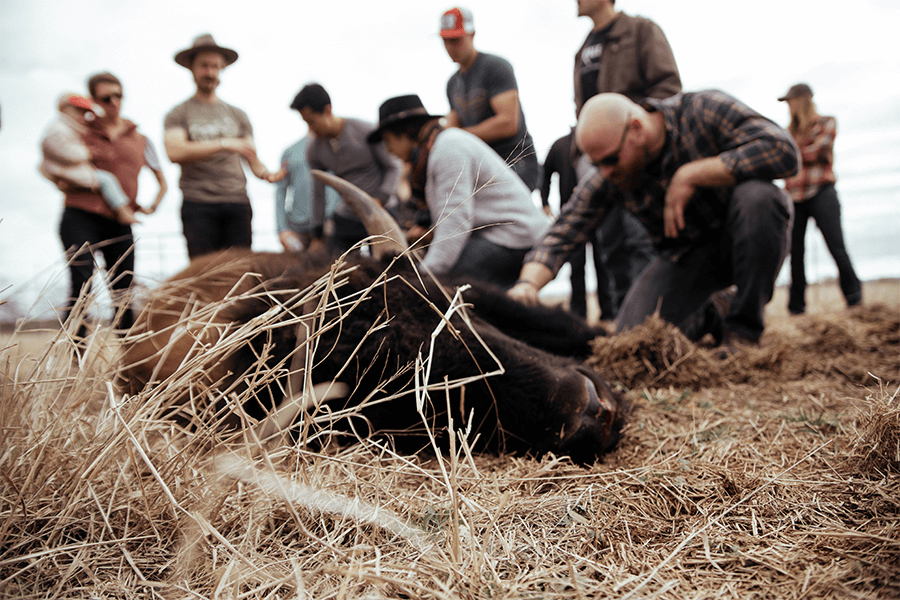
Making Peace with Death
We as humans have this strange condition where, in an aloof sense of superiority, we question the natural order of things. We get especially dodgy in the presence of anything thing that reminds us of our relative insignificance as individuals, or worse, of our own mortality. It is as if our society believes there is the natural world and the human world and that we are just exploring for the first time if it is possible for the two to co-exist.
We are part of the natural world, and life is so much bigger than the individual—or any species for that matter—and it’s so much more than the moment that any single flame burns out. The process of life, death, decay, and new life repeats itself in a beautiful chorus that has evolved to play in harmony with nature’s plan. We regard this process with great awe and admiration. We love everything about nature’s wonder and beauty with one glaring exception: death. We obsessively fixate on this one aspect of a much larger picture to the extent that we often fail to appreciate how spectacular the whole thing is. Further, many of us are so removed from the powerful reality of this cycle that we think it unnatural, cruel, or even grotesque for a human to take part directly in the process. We can accept a wolf or a lion dismembering its prey while still alive, but a human taking an animal’s life—even if in a humane and controlled environment—is seen totally differently. What is really just a part of a beautiful equation far greater than our own capacity to comprehend is often perceived as ugly, taboo, and even unethical.
Large ruminant animals were put here for an incredible purpose—to sustain life. They support the ecosystems to which they belong, provide food for predators (including humans), and even help rebuild the soil with their innate behavoirs. To honor an animal, we can celebrate how that animal was able to fulfill its purpose on this earth. I’ve always accepted this view of our role in the food chain. However, my experience begins and ends (or so I thought) with hunting for my family in a wild and fair chase setting. Even in helping to grow EPIC, I’ve never had the experience of taking a life in the space where our role as a predator species in nature meets our commercial and nutritional needs in the much more complex modern world.
However, as I continued to contemplate my upcoming responsibility, it was becoming clearer that the only thing unnatural about this story is our perception and continued insistence that what is glorious in all of nature is a dark secret to be hidden and silenced within the “human world.”
Still, I had to prepare for a moment where acknowledging this reality isn’t enough. I had to actually pull the trigger. I had made peace with my role in the food chain, but now I needed to make peace with the reality that the life of this animal I love was going to end at my hand.
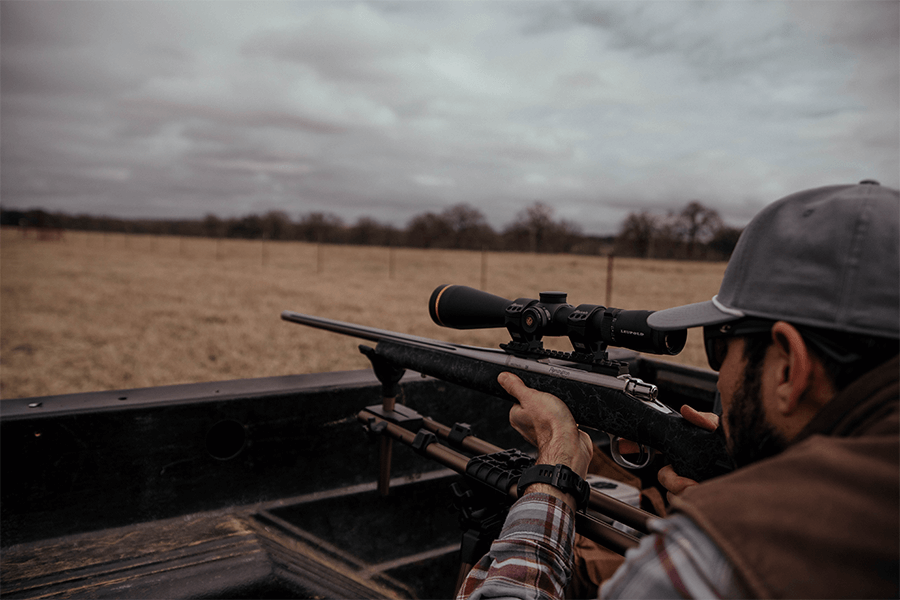
With Power Comes Responsibility
It finally hit me: it doesn’t matter if I’m behind the trigger today or simply taking a seat at the table tomorrow. I am complicit and therefore responsible for everything that happens before and everything that happens after my small part of the story. All the food I’ve ever eaten and every product I’ve ever used has all been at my hand—trigger or not.
As consumers, that is the awesome power we’ve always wielded. The only difference is that we’ve delegated the dirty work and grown comfortable with the blinders that hide the harsh realities plaguing the systems we continue to support. With this field harvest, we are removing those blinders, celebrating this animal and empowering consumers with the knowledge to support a better way.
Every time you make a purchase, you are all pulling the trigger, advocating for the actions of whatever systems brought it to the shelf. Even though I might be holding the gun today, all of our guests are sharing in the moment, participating in the processing of the carcass and telling the story so others can wake up and take responsibility for supporting a better system—one more aligned with their own values.
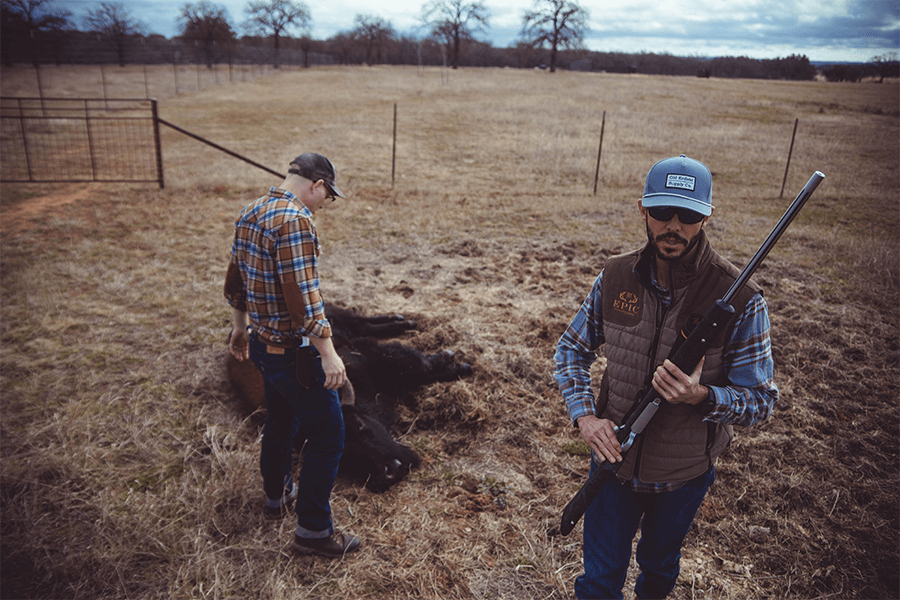
The Moment of Truth
Armed with a new resolve, my entire perspective on the day had shifted. This was not sport, and there was no joy in this for me. Just focus. While we love and care for these animals, we also accept and respect their purpose on the earth. Nonetheless, even in taking this animal’s life I wanted to protect it from suffering. I didn’t want to let it down. I was nervous but had begun to embrace and take solace in the pressure. It reminded me how much I care for and appreciate this incredible animal and his contributions to the earth. The impact he has already had on the land is profound, and the story he is telling in this consumer revolution is powerful. We have a role to play as a human predators, but we also have the capacity—and perhaps a responsibility—for empathy and compassion within this role.
My heart was racing as we approached the bull we had selected for harvest. I had rehearsed the details, checked and rechecked my equipment, and been through a thousand mental repetitions. However, this time it was real, and the stakes would never be higher. We ease to a stop at a comfortable distance we chose in order to minimize any pressure or stress on the animal while simultaneously ensuring it was close enough to all but guarantee an immediate and painless death, free of any suffering.
As we eased to a stop, the bull was laying down, still. He didn’t even acknowledge us, so relaxed in the field that he only rises to stretch after our ranch manager motions to get his attention. Standing on a regenerating pasture, chewing grass and surrounded by its herd mates, the image of that bull in a state of total contentment will forever be ingrained in my memory. I am grateful for the life he lived and the life he will sustain.
After I take the shot, congratulatory remarks for a job well done are offered. I welcomed the handshakes and hugs while buzzing from the swelling tide of emotions. However, the only approval I truly sought was from the animal now laying in the field for one last time. We worked hard to create an incredible environment the bison to express his natural behaviors and realize his potential to heal the land. After a lifetime of him doing his job, I did mine behind a rifle for one split second.

Beyond Food
This bison will not become part of the 40% of food in the U.S. that ends up wasted. There was a team of people from EPIC, Roam Ranch, and the community there to ensure a more worthy celebration. We honored the animal by giving him the respect deserved as a sentient creature by using his sacrifice as a teaching tool and by celebrating his life through the conscious consumption of the nourishing meat and resources provided.
The sting began to fade as I looked in the field and see the remaining bison continuing to passively graze. By their demeanor, you’d think nothing happened at all. Life just goes on. Simultaneously, 25 people started jumping in to do whatever they could to aid in the next chapter of this animal’s life, including skinning, eviscerating, quartering, trimming, deboning, grinding, packing, labeling, and cleaning.
A few hours later, not one piece of that animal had gone to waste. Bones were kept for broth-making as well as marrow and scraps for dog food. The most nutrient-dense organs were in high-demand, and even the brain was kept to tan the hide. There is an energy in the air that I can’t quite explain. It is as if we’ve tapped into something deep within our DNA—a sixth sense that has been starved for attention. It is every bit as tangible as the other five but exponentially more elusive in the modern world. We’ve not only reignited a connection to our food, but we have also shared a powerful and emotional journey alongside it.
Those of us who were there will understand. It may be tough to appreciate if you are simply reading this account, so I encourage you to get on the land and experience it for yourself. Remove the blinders, push beyond your comfort zone, and step behind the curtain to form a real relationship with your food. Armed with the deeper connection that such a profound experience provides, you may find that you reconsider your convictions for all of the food you eat. It’s worth exploring because, after all, we are all behind the trigger.



